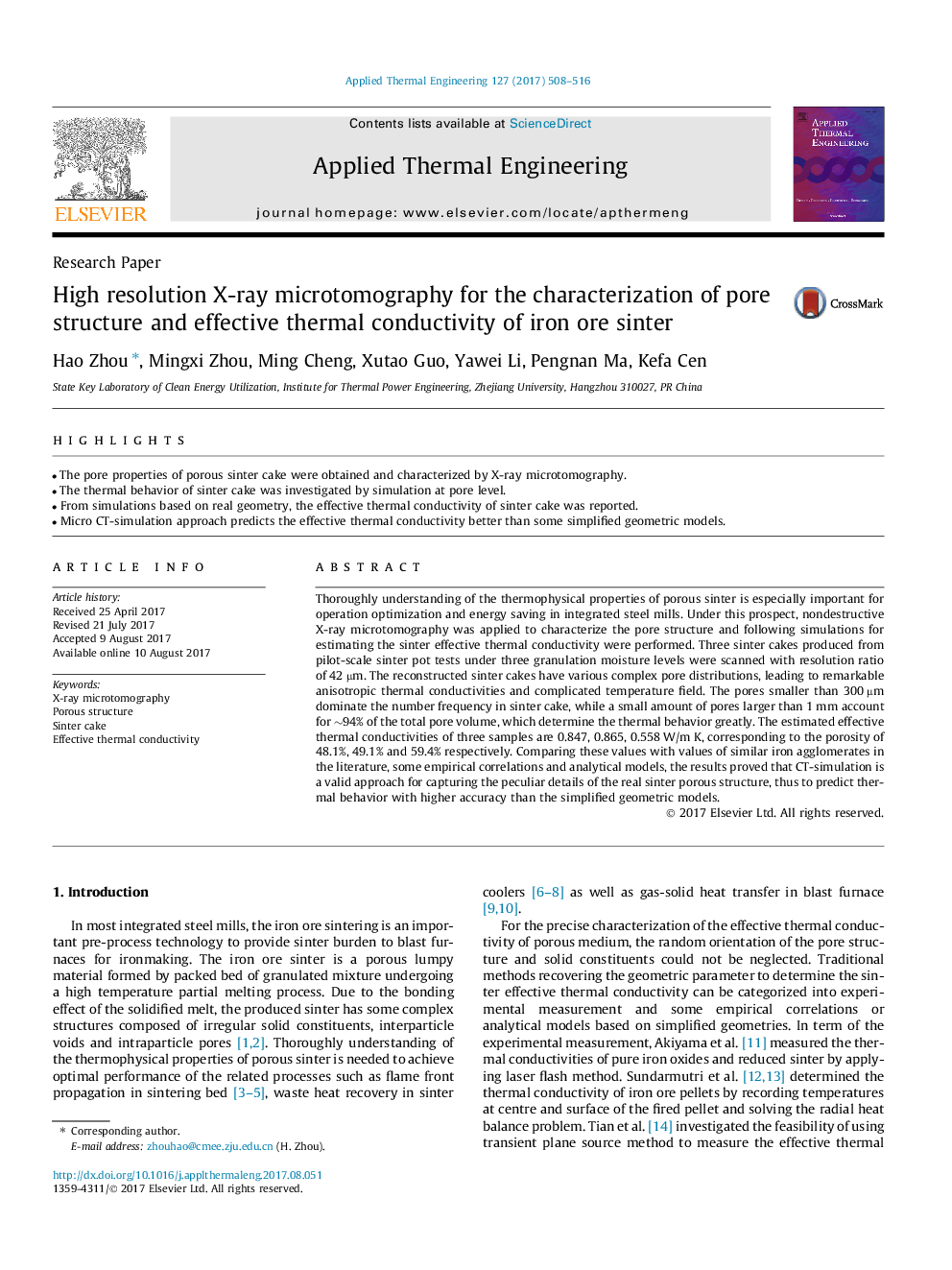| Article ID | Journal | Published Year | Pages | File Type |
|---|---|---|---|---|
| 4990738 | Applied Thermal Engineering | 2017 | 9 Pages |
Abstract
Thoroughly understanding of the thermophysical properties of porous sinter is especially important for operation optimization and energy saving in integrated steel mills. Under this prospect, nondestructive X-ray microtomography was applied to characterize the pore structure and following simulations for estimating the sinter effective thermal conductivity were performed. Three sinter cakes produced from pilot-scale sinter pot tests under three granulation moisture levels were scanned with resolution ratio of 42 µm. The reconstructed sinter cakes have various complex pore distributions, leading to remarkable anisotropic thermal conductivities and complicated temperature field. The pores smaller than 300 µm dominate the number frequency in sinter cake, while a small amount of pores larger than 1 mm account for â¼94% of the total pore volume, which determine the thermal behavior greatly. The estimated effective thermal conductivities of three samples are 0.847, 0.865, 0.558 W/m K, corresponding to the porosity of 48.1%, 49.1% and 59.4% respectively. Comparing these values with values of similar iron agglomerates in the literature, some empirical correlations and analytical models, the results proved that CT-simulation is a valid approach for capturing the peculiar details of the real sinter porous structure, thus to predict thermal behavior with higher accuracy than the simplified geometric models.
Related Topics
Physical Sciences and Engineering
Chemical Engineering
Fluid Flow and Transfer Processes
Authors
Hao Zhou, Mingxi Zhou, Ming Cheng, Xutao Guo, Yawei Li, Pengnan Ma, Kefa Cen,
